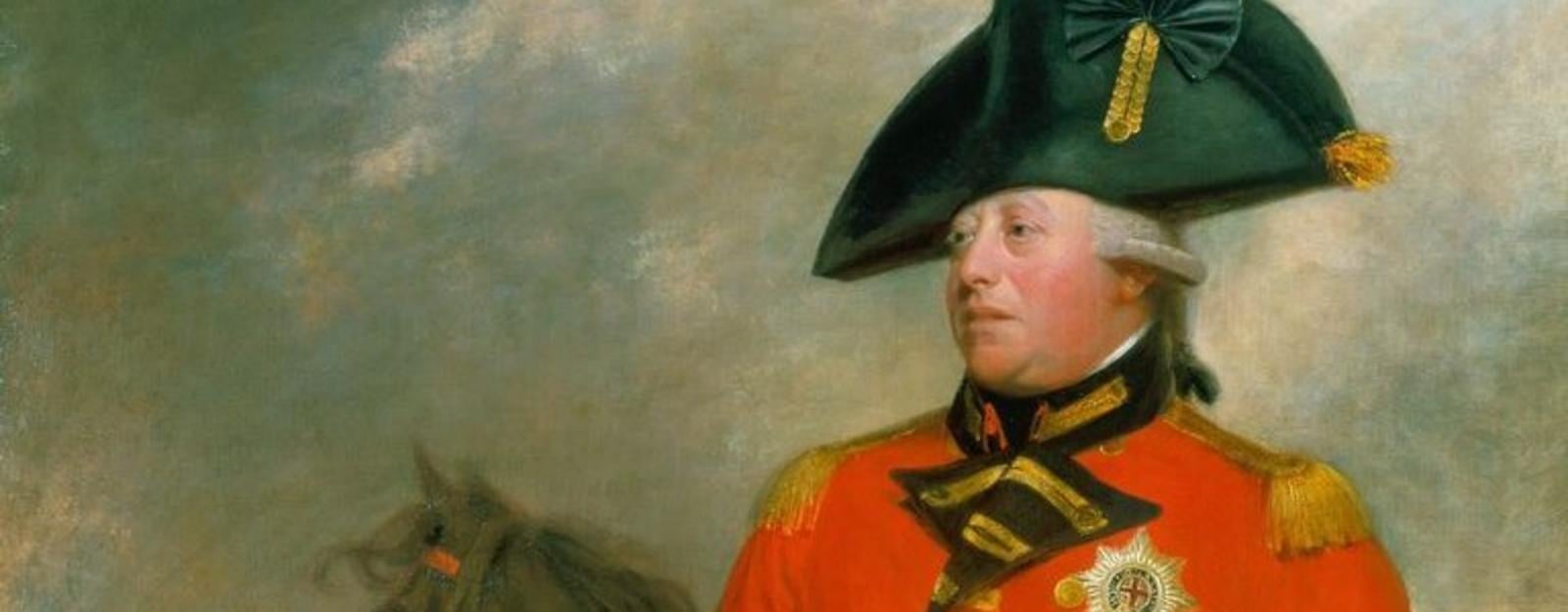George III, King of the United Kingdom (1738-1820)

- Born 1738, Norfolk House [London]
- Died 1820, Windsor Castle
George III was the grandson of George II. He acceded to the throne in 1760, his father, Frederick, Prince of Wales having predeceased him in 1751. In 1761 George married Princess Charlotte of Mecklenburg-Strelitz, with whom he had 15 children. Unwell for some of the 1780s, and then again in his last decade, his son, George IV became Regent for him 1811-20.
Following the death of his father when he was 12 years old, George came under the tutelage of John Stuart, 3rd Earl of Bute, an advisor to his mother, Augusta. Bute was a keen scholar and guided and developed the young prince's knowledge of arts and sciences.
Shortly after his accession and marriage to Queen Charlotte, George III purchased, for £20,000, the entire collection of Consul Joseph Smith, a British diplomat living in Venice. Smith had amassed a first-class collection of paintings, including the world-famous Canalettos, drawings, books, medals and gems. The purchase of these works served a practical as well as aesthetic purpose for George III and Queen Charlotte as they sought to furnish their homes and palaces.
George III acquired many important drawings in the Royal Collection. His Librarian Richard Dalton had travelled in Italy and purchased works from the Albani collection in Rome in 1762. These included highlights by seventeeth-century Italian Baroque artists such as Domenichino and the Carracci as well as the celebrated 'paper museum' of Cassiano dal Pozzo. It seems likely that the superb drawings by Raphael and Michelangelo in the royal collection were also acquired during George III's reign; though there is no evidence of how such treasures entered the collection, they are first recorded in it in 1810.
George III was passionate about books and began to build up a library again, after George II's library had been given to the British Museum in 1757. The Consul Smith books formed the nucleus of the new Octagon Library at Buckingham House.
Despite some of the more splendid objects made for George (such as the Gold State Coach), his tastes tended towards the more simple and plain, something that often brought him into conflict with his eldest son. George III was not uninterested in the arts though. He presided over the founding of the British Royal Academy for artists in 1768, and he patronised British artists and craftsmen. Academicians such as the German-born, Johan Zoffany (as in this portrait of the family) worked for George III and Queen Charlotte and George also engaged History painters such as Benjamin West to make grand pictures with Classical or historic subject matter.
The latter part of George III's reign was taken up with illness and the role of patron and collector passed on to his son, the future George IV.